
© Marc Haegeman. (Click image for larger version)
Russian Ballet Icons Gala 2018
★★★✰✰
London, Coliseum
25 February 2018
russianballeticons.com
www.londoncoliseum.org
This year’s Russian Ballet gala was ostensibly in honour of the 200th anniversary of Marius Petipa’s birth. Any choreography attributed to him was mostly a long way ‘after Petipa’, but it’s always fun to see excellent Russian dancers deliver pas de deux from Don Quixote, Swan Lake and Le Corsaire. For good measure, we also had the Giselle Act II pas de deux, performed by the Royal Ballet’s Francesca Hayward and Federico Bonelli.
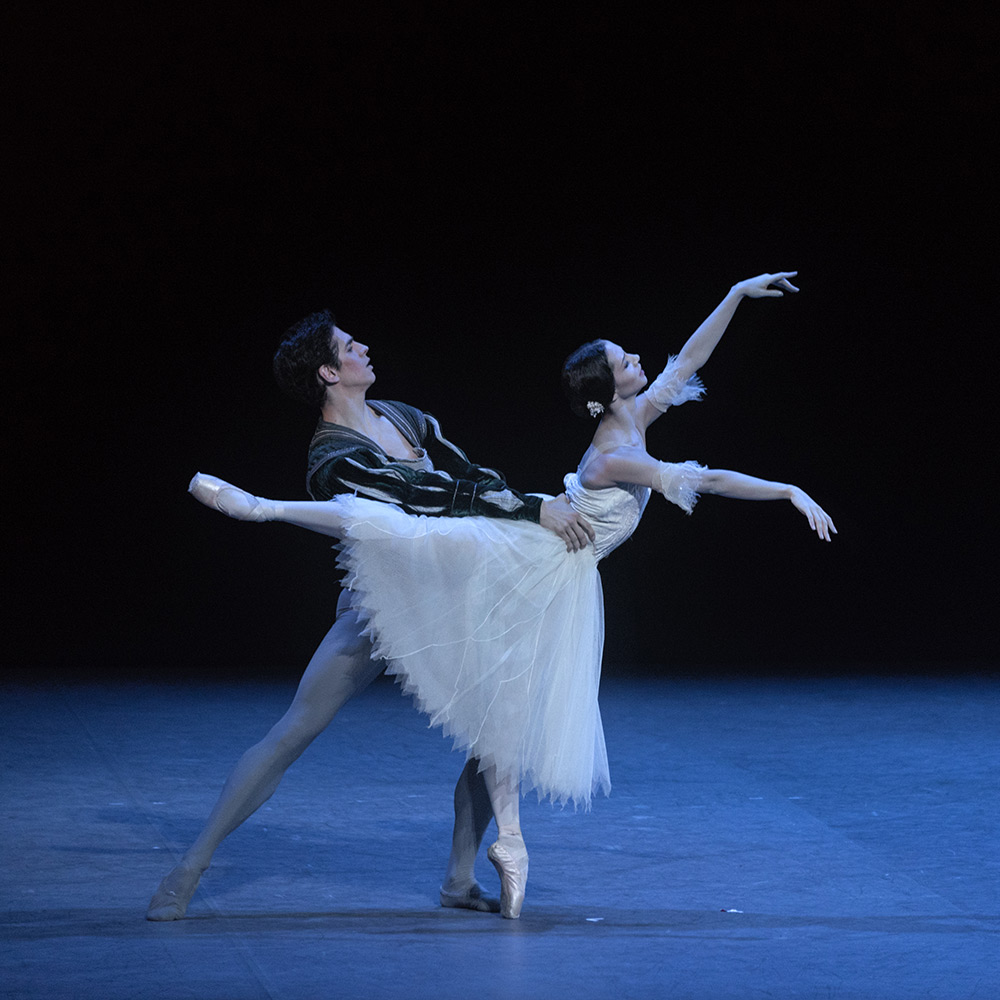
© Marc Haegeman. (Click image for larger version)
The ghostly encounter between Giselle and Albrecht doesn’t usually come off well in a gala of flashier numbers, but Hayward and Bonelli were persuasively other-worldly, thanks to dancing Giselle (though not together) in the Royal Ballet’s current season. Less assured were another pair from the company, Mayara Magri and Stanislaw Wegrzyn, in the Coppélia wedding pas de deux: choreography attributed to Ninette de Valois, after Cecchetti and Petipa. A tough ask for youngsters to open a star-studded gala in a duet they hadn’t performed before.
Brazilian Magri is a soloist who recently made an impressive debut as Myrtha in Giselle. Polish Wegrzyn won the Prix de Lausanne apprentice scholarship at 18 in 2017 and chose to join the Royal Ballet for a year. He made a gallant partner for Magri’s charming Swanhilda, though his inexperience showed in setting up her many balances. It would be unfair to contrast them with the practised ease of Maria Alexandrova and Vladislav Lantratov, partners in life as well as on stage, as are Anna Tikhomirova and Artem Ovcharenko (in a pas deux from La Sylphide).

© Marc Haegeman. (Click image for larger version)
Alexandrova and Lantratov closed the first half of the programme in splendid high camp style with the Don Q pas de deux. They reappeared in the second half in an Adagio from the Bolshoi’s controversial new Nureyev ballet. The choreography is by Yuri Possokhov, former Bolshoi dancer who made his subsequent career in the West, becoming choreographer-in-residence with San Francisco Ballet. The premiere of Nureyev was cancelled in July last year, and eventually opened for just two days in December. It is scheduled to be performed in Moscow in June this year.

© Marc Haegeman. (Click image for larger version)
The Adagio excerpt is for Rudolf Nureyev and Margot Fonteyn, to the Liszt music Ashton used for Marguerite and Armand, rearranged by Ilya Demutsky. Alexandrova, who dances the ‘Margot’ role in the Bolshoi cast even though she quit the company last year, wears a full skirt that flies above and around her legs as she is manoeuvred in extravagant lifts. The pas de deux, an elaboration of Ashton’s vision of enamoured Marguerite, is very much about the ballerina: Lantratov, in a polo neck, cummerbund and tights as Nureyev/Armand, has only a brief solo passage of histrionics. He looks too slight to be as glamorous as Nureyev in the role, though he has the floppy hairstyle – and he is a fine dancer.
Kimin Kim, as Ali in Le Corsaire pas de deux with Ekaterina Krysanova, bears a closer resemblance to Nureyev in his prime. Kim has a spectacular floating jump, which he continued to display, unfazed, after slipping awkwardly in a landing. He and Krysanova, an elegant classicist, as Fonteyn was in the Corsaire pas de deux, closed the gala on a high note.
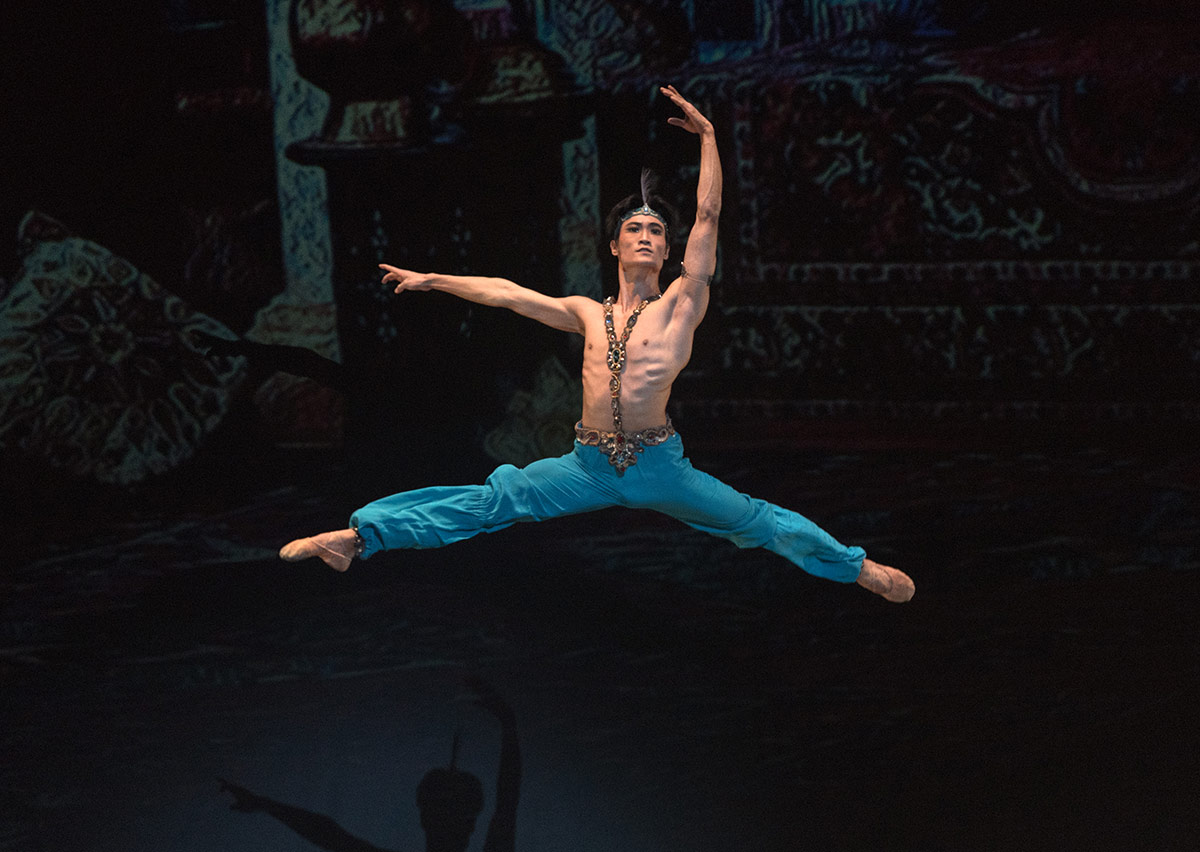
© Marc Haegeman. (Click image for larger version)
In between came some novelties and oddities. Polina Semionova and Alexei Orlenco from the Berlin Staatsballett performed a quirky Cello Duet by Nacho Duato, in which she was the cello and he the instrumentalist, sawing away in a baroque costume. Two Italians from the Teatro San Carlo ballet company in Naples danced a Roland Petit gala number for the late Maya Plissetskaya, La Rose malade. Claudia D’Antonio pulsed in pink as the dying rose, supported by Giuseppe Picone in white tights and bare chest. Some may remember him as a dancer with English National Ballet and American Ballet Theatre; at 42, he is now the San Carlo ballet company director and evidently still in good shape.

© Marc Haegeman. (Click image for larger version)
Sergio Bernal from the National Ballet of Spain danced a solo, The Swan, by veteran Spanish choreographer Richard Cué. Set to the ‘Dying Swan’ music by Saint-Saens, the solo refers to Fokine’s choreography for Pavlova, without the bourrées: not nearly as effective as Calvin Richardson’s far more original version for himself when he was still a Royal Ballet student.
Natalia Osipova was not available to dance her scheduled appearance in Yury Grigorovich’s The Legend of Love (1961). Her place in the oriental-tinged extract was taken by Viktoria Tereshkina, who also danced the Black Swan pas de deux with Xander Parish. Tereshkina, who was first cast in most of the Mariinsky Ballet’s London season last summer, is an eloquent technician. Parish, alas, is not. He posed nicely but appeared out of his league as a partner. She fared better without him.
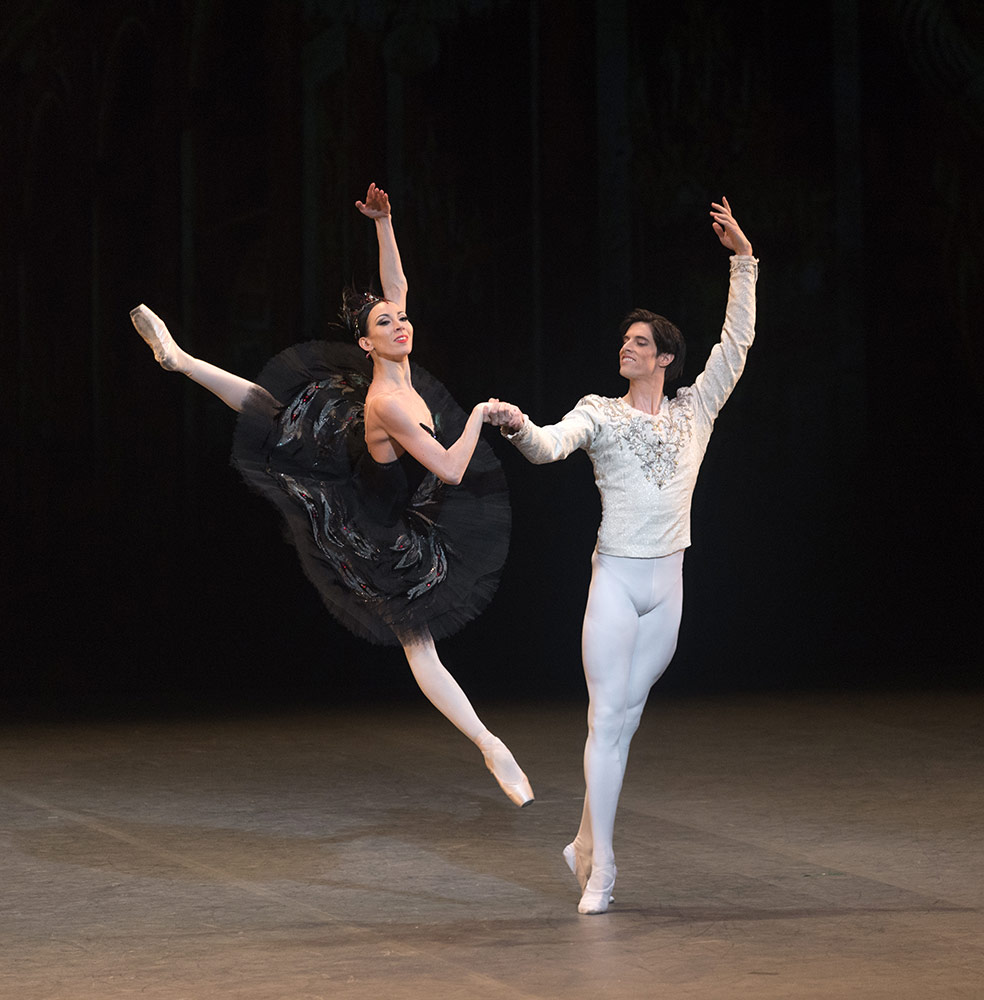
© Marc Haegeman. (Click image for larger version)
The founder and artistic director of the Russian Ballet Icons Gala, Olga Balakleets, aims to include new works by young choreographers in her programmes, alongside the usual gala staples. Ilya Zhivoy of the Mariinsky Ballet contributed A Flashback, to music by Arvo Part. Ekaterina Kondaurova recalled a tempestuous relationship with the elusive figure of Roman Belyakov, a lost lover she clung to and rejected, fought against and was reconciled with, all to the shifting moods in Part’s composition for strings. In spite of a lot of semaphoring of emotions, it’s a rewarding piece, more interesting than Petit’s soupy tribute to Mahler.
The turkey of the evening was the preview of an upcoming ballet, Warrior of Light, about the Russian painter and philosopher Nicholas Roerich, designer of Nijinsky’s 1913 Rite of Spring. Balakleets is involved with a cultural organisation called Theatrum Vitae that ‘strives to bring the world closer together through a vibrant fusion of the performing and visual arts.’ It is supporting the endeavours of the Khan MacKay family from Montana, whose four offspring have trained as ballet dancers. The two youngest sons, aged 21 and 17, are credited with the choreography, and their mother with the creative concept and design (sponsored by Swarovski).
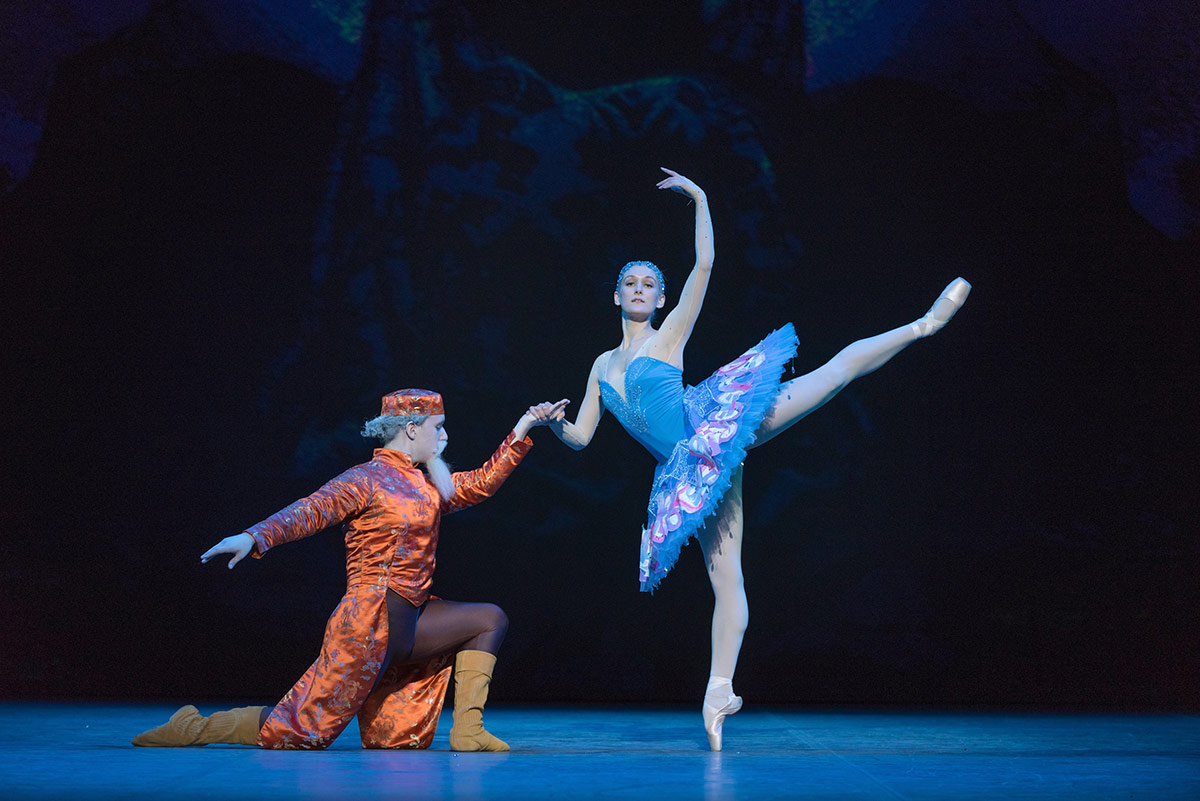
© Marc Haegeman. (Click image for larger version)
The two older sisters appeared as visitations from Roerich’s paintings, projected on the backdrop as well as depicted on the painter’s canvas. Fernando Montano from the Royal Ballet was a last-minute substitute, uncredited, as a vaulting warrior spirit. The painter (Nicholas MacKay), brush in hand, was a ludicrous figure, the choreographic excerpts commonplace. Roerich was a utopian visionary who led an extraordinary life. Whether this intended ballet will do him justice is open to doubt.
Grateful thanks must be given to English National Ballet’s orchestra, conducted by Valery Ovsyanikov, who coped with an eclectic selection of composers and the varying demands of dancers. Though this thirteenth annual gala was hardly a coherent tribute to Petipa, the performers, as always, were valiant and the stage management slickly organised.













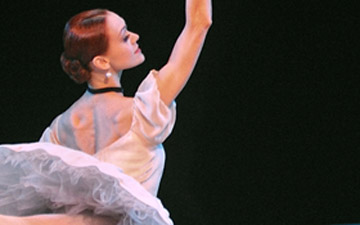
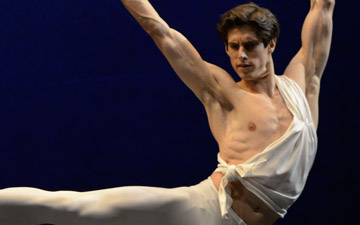
You must be logged in to post a comment.